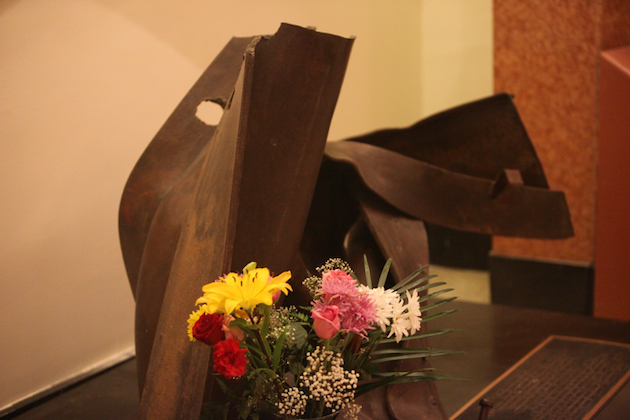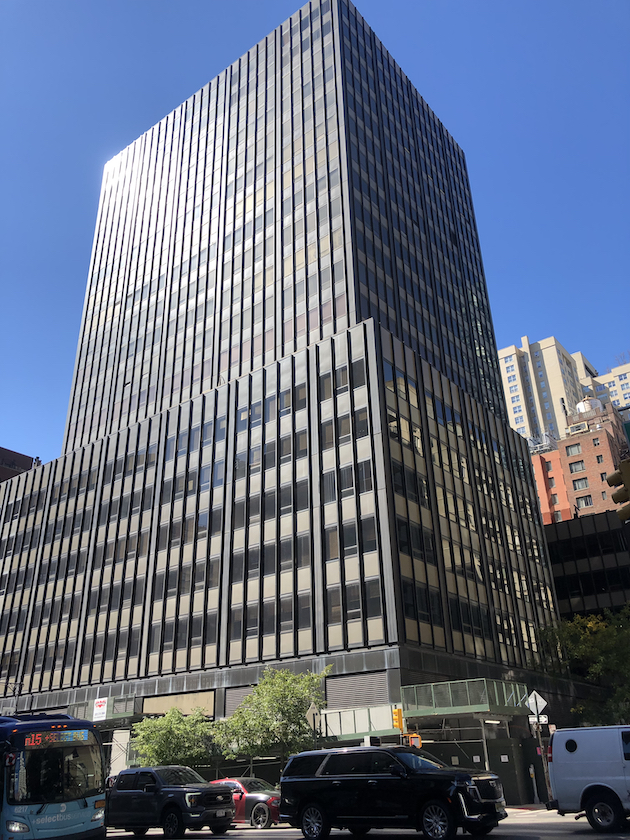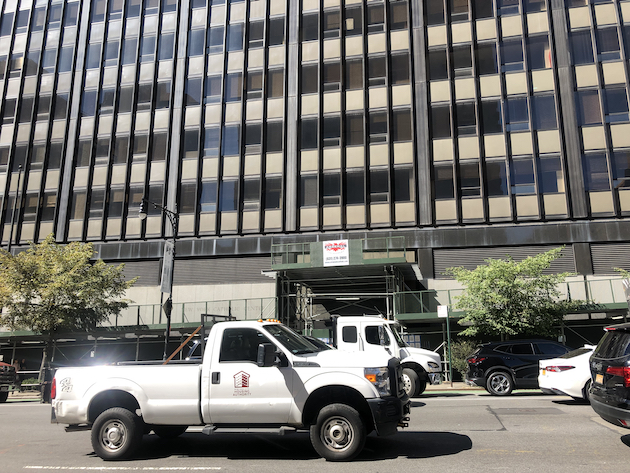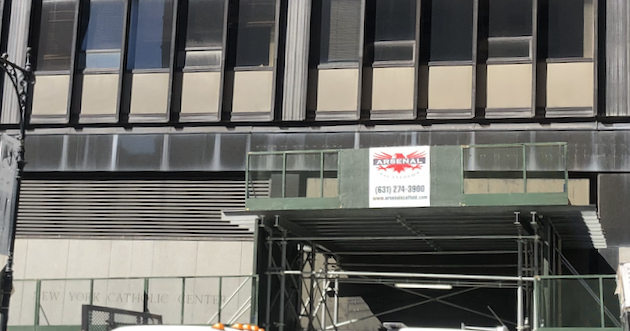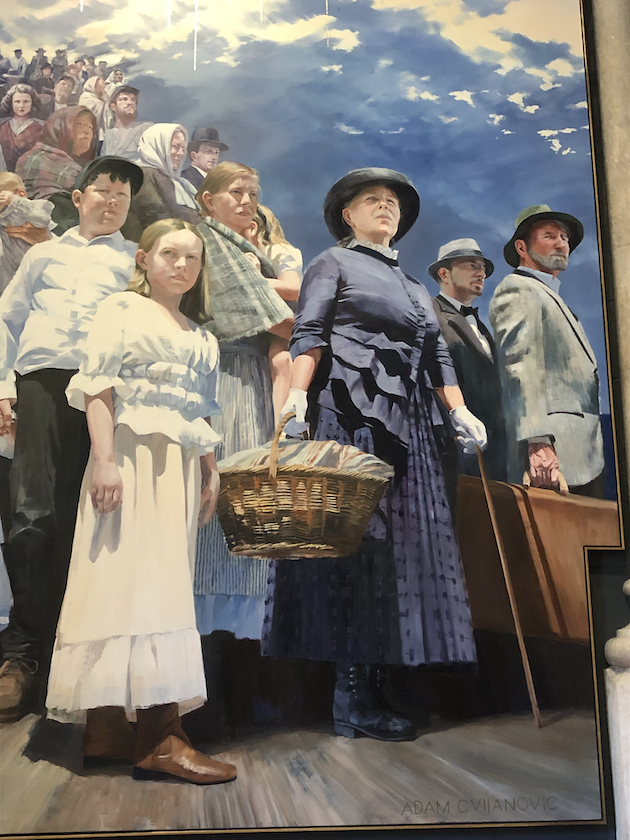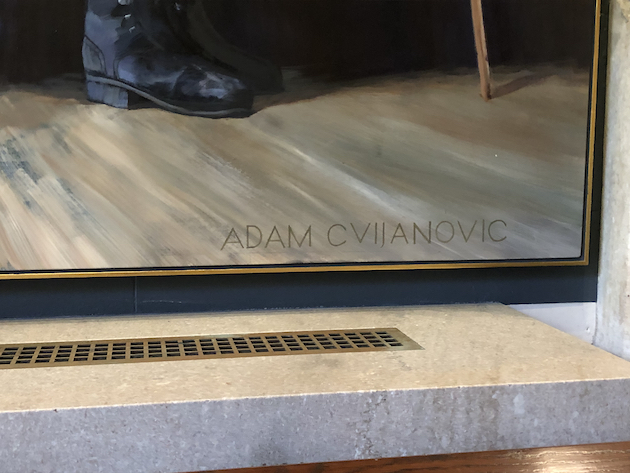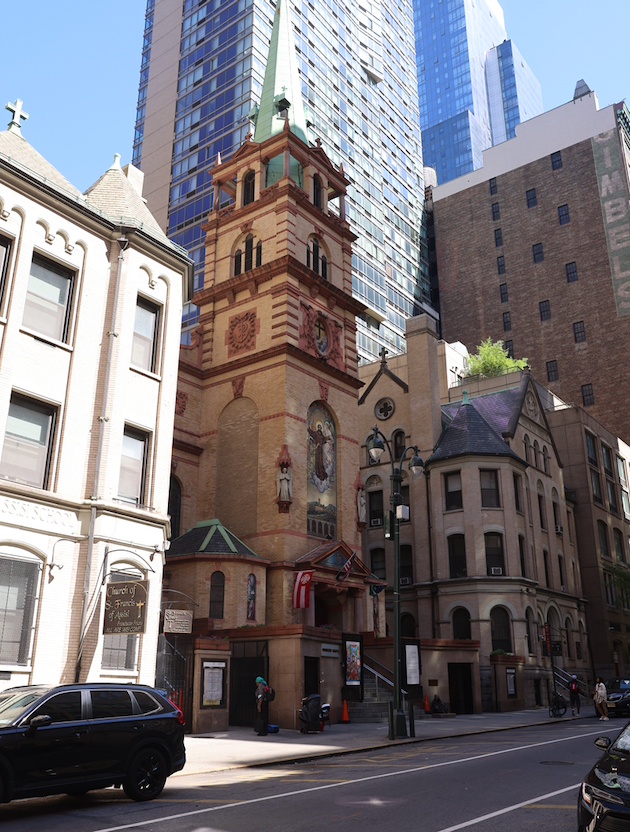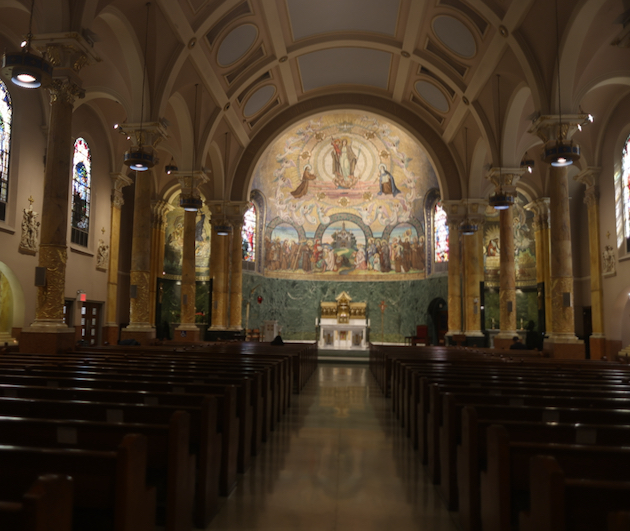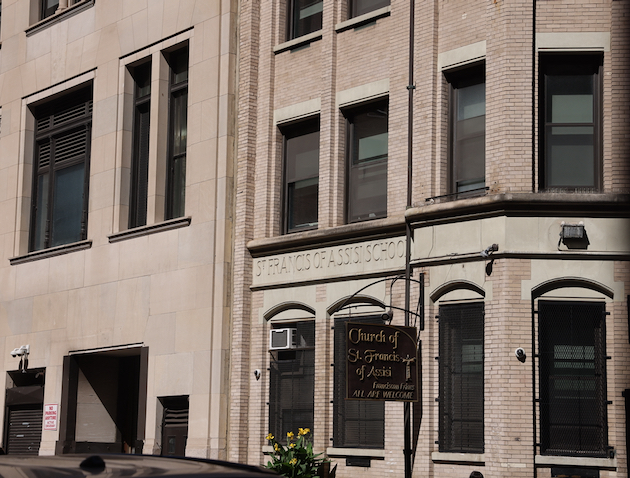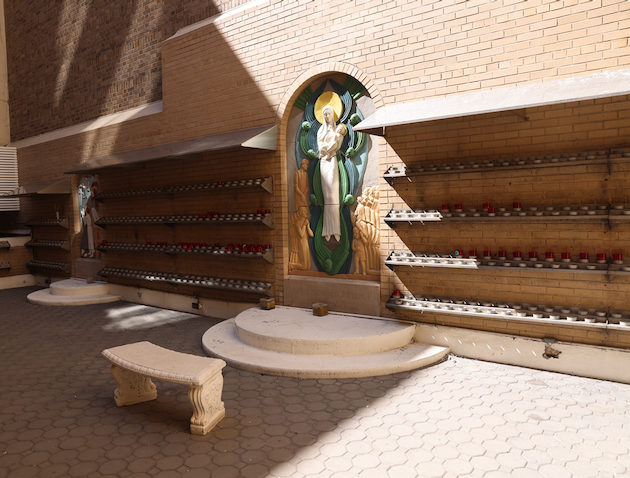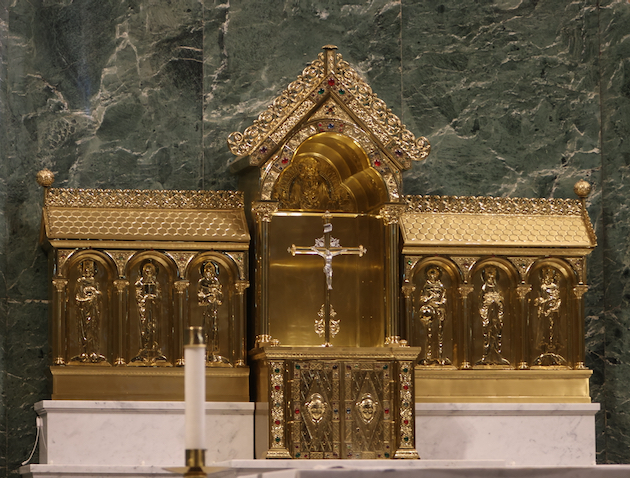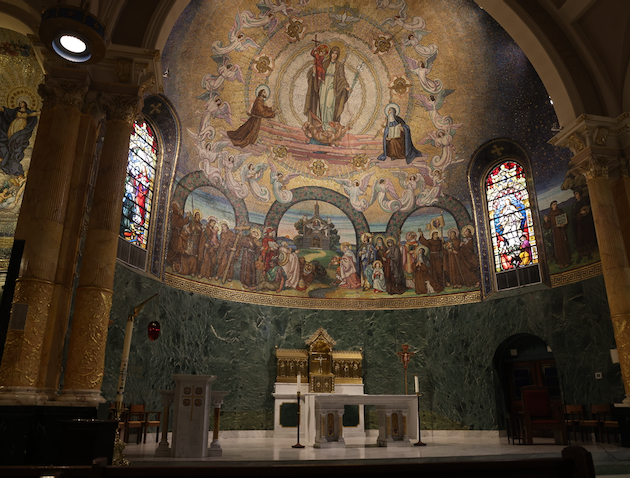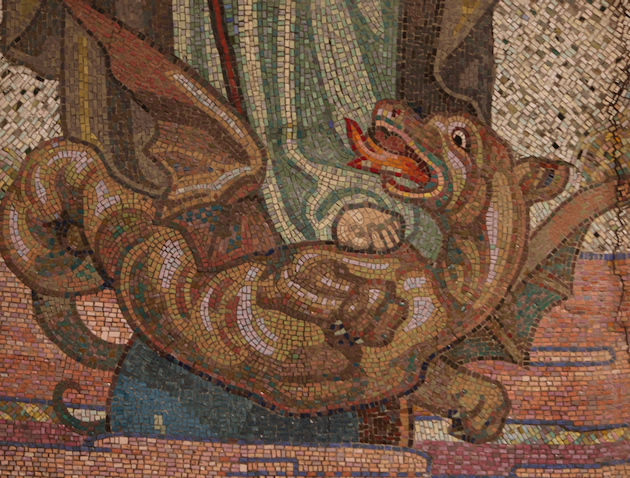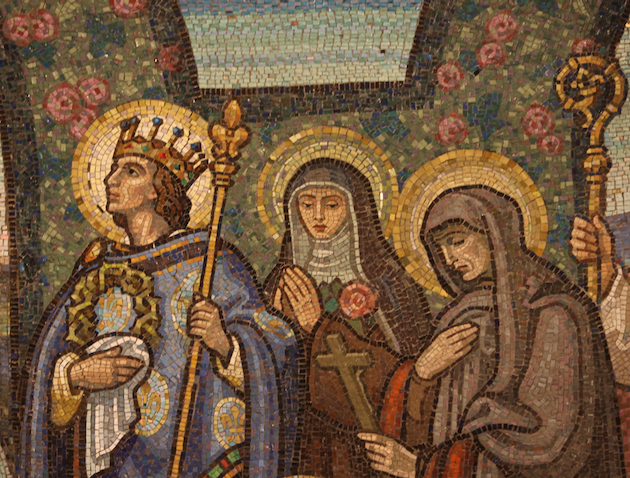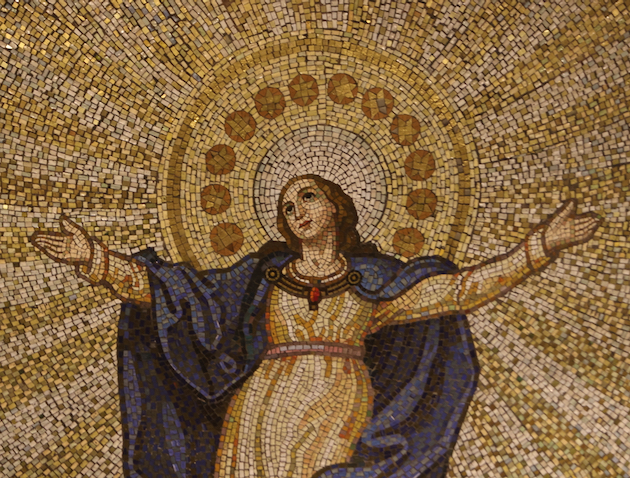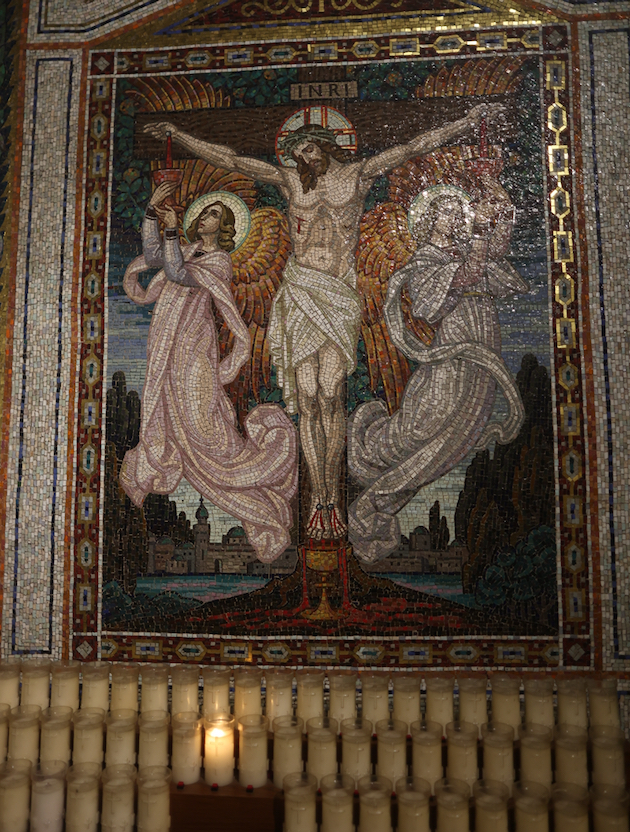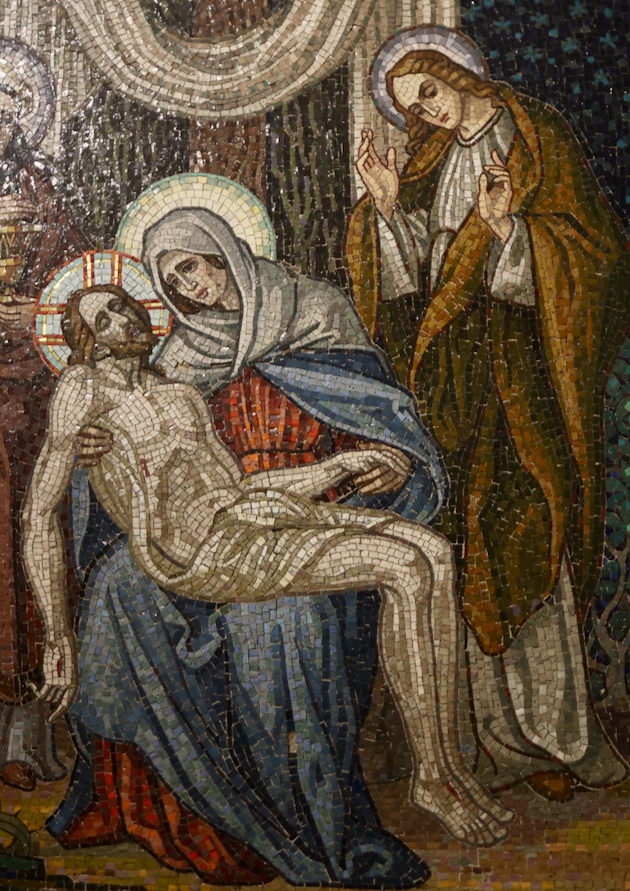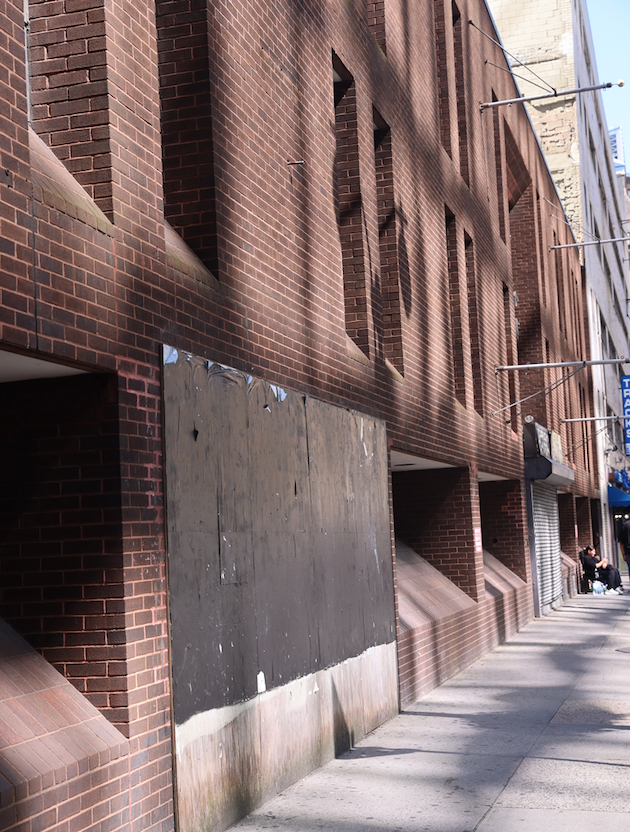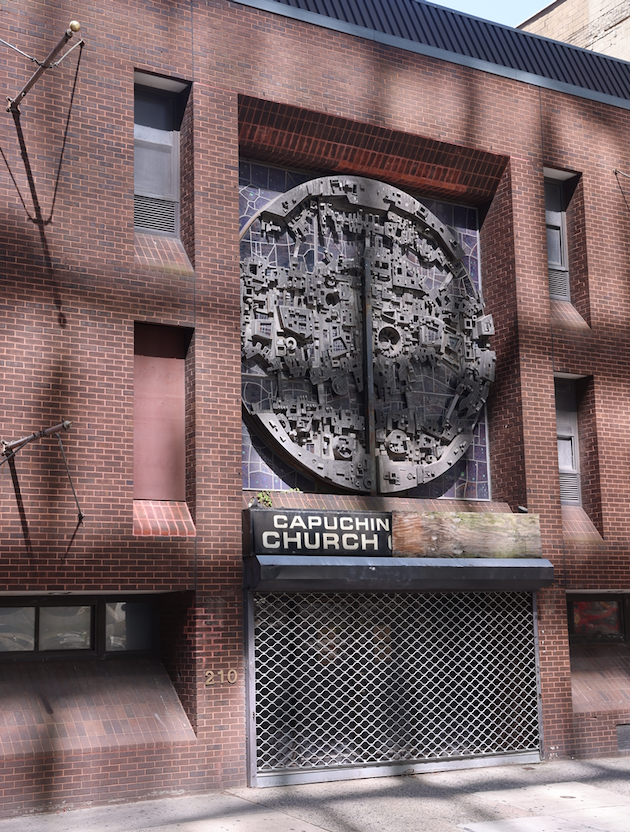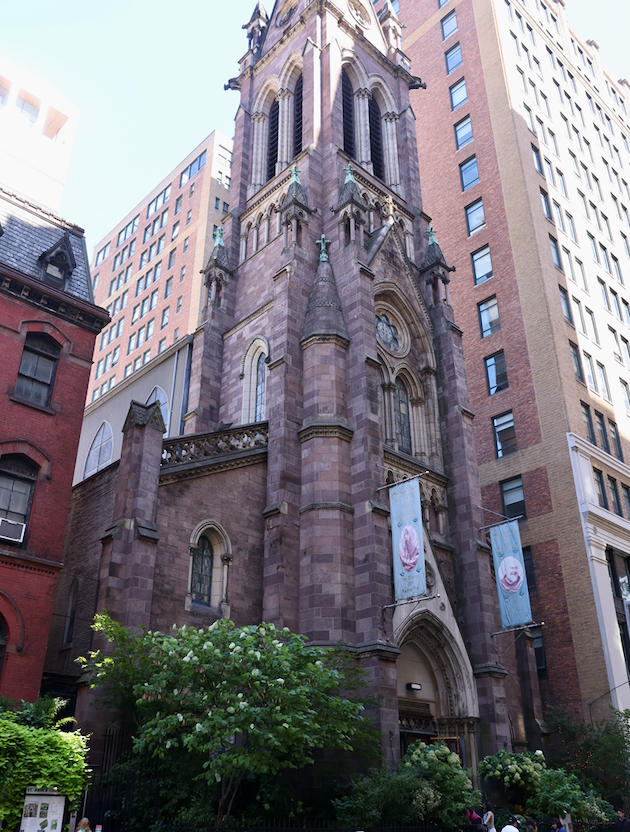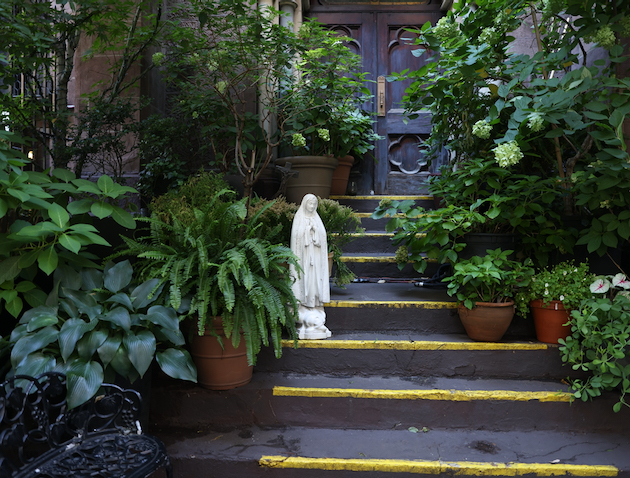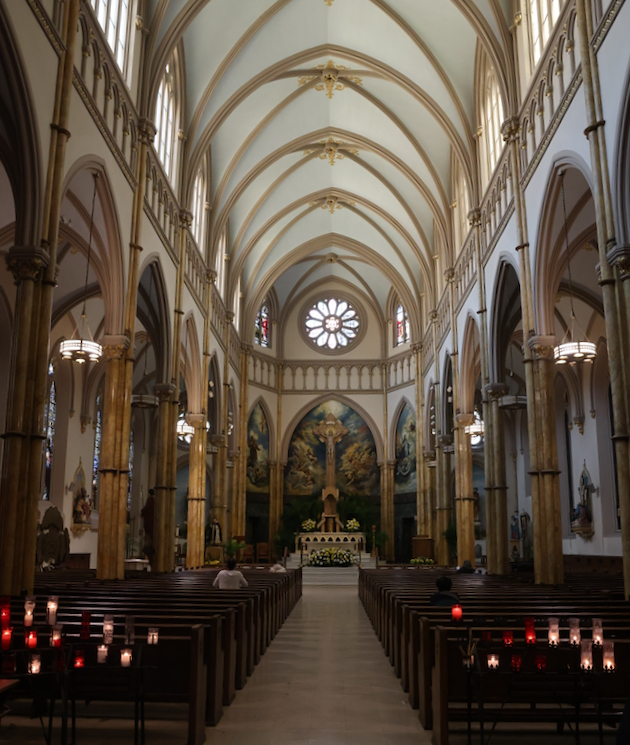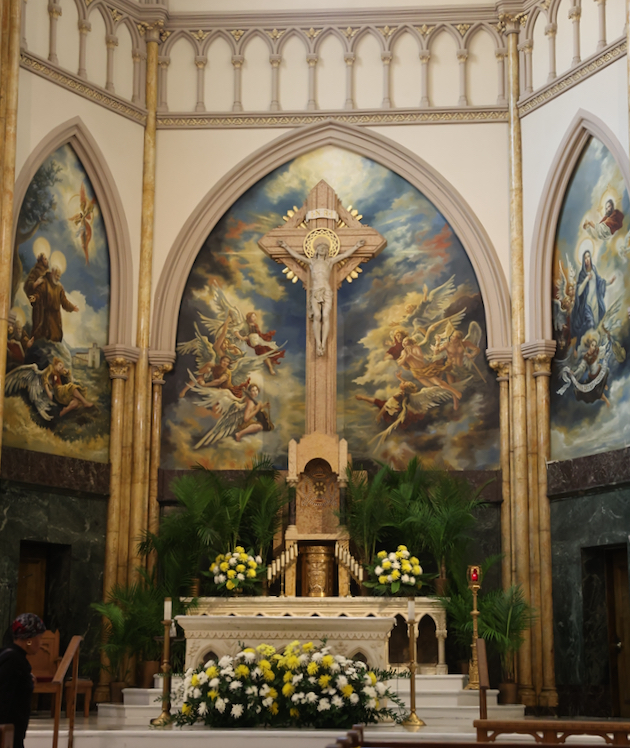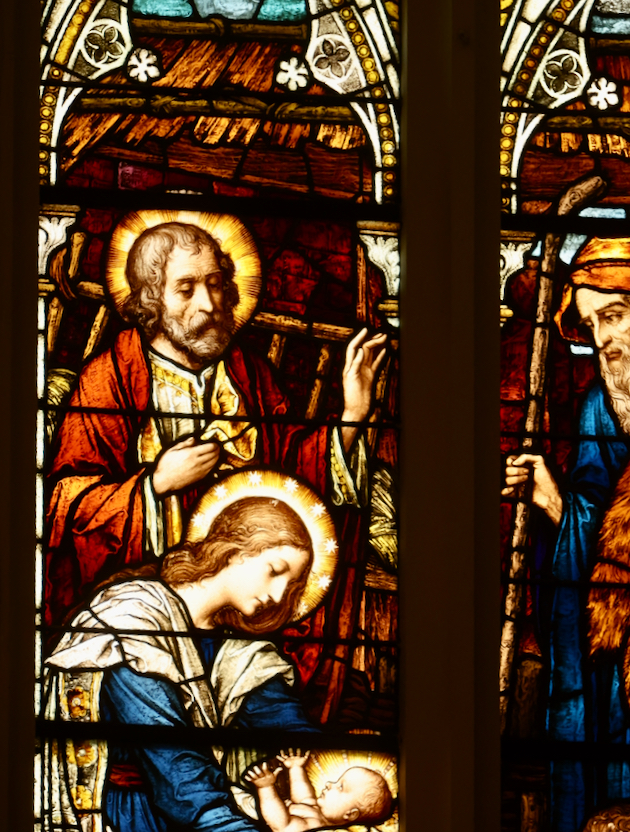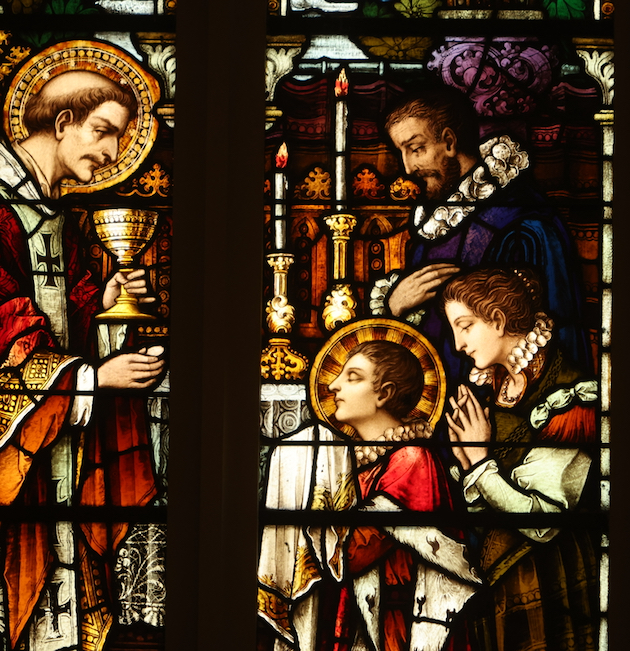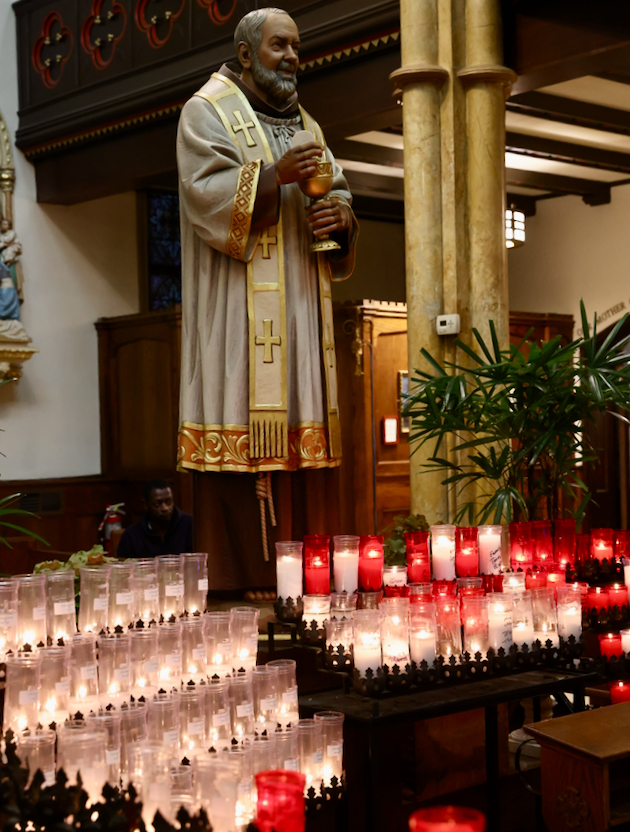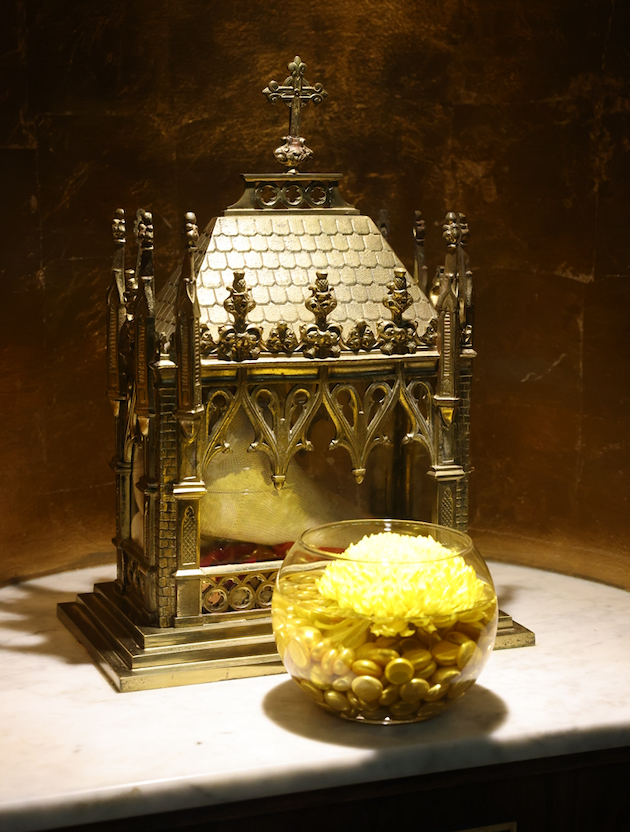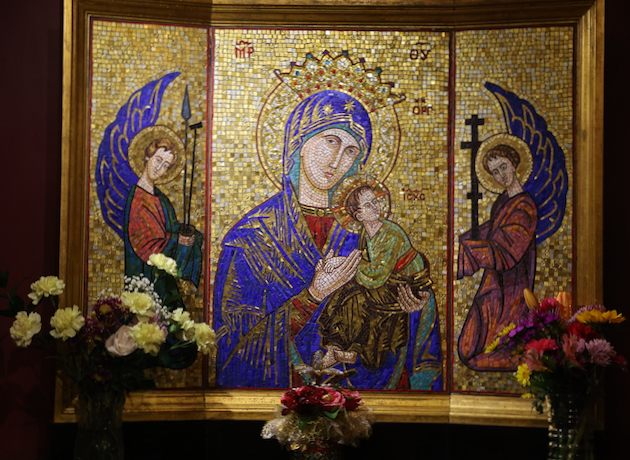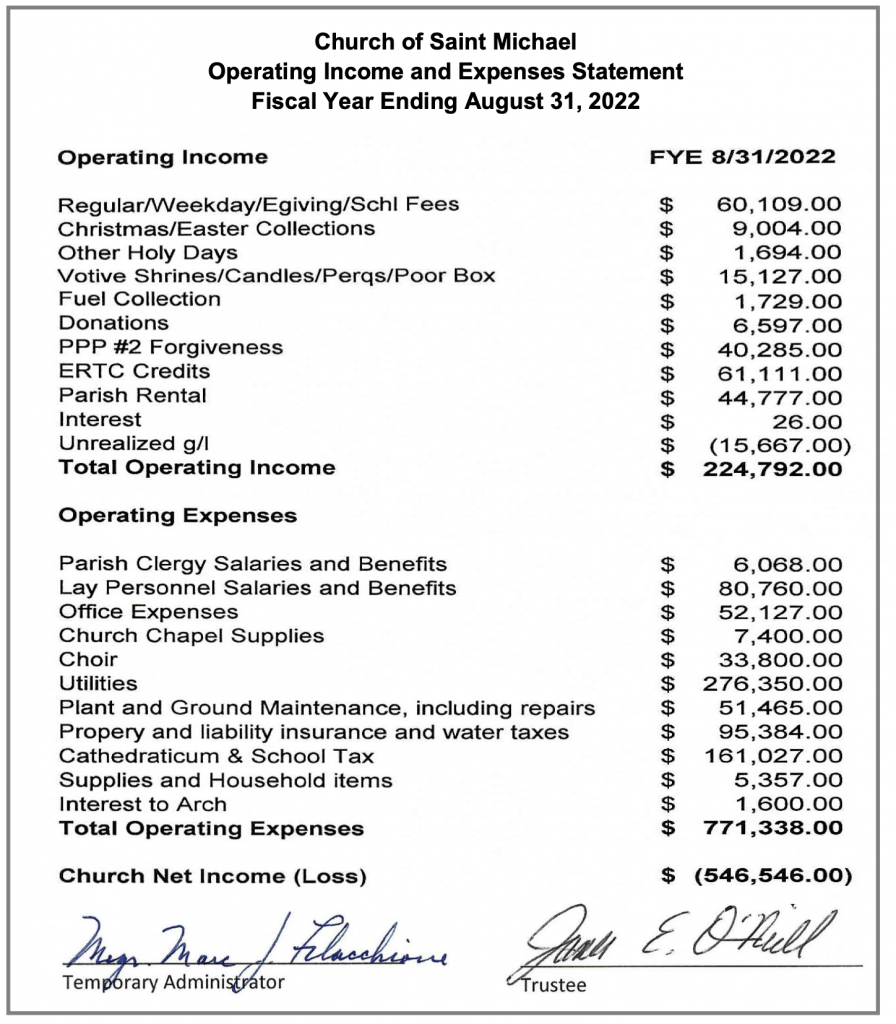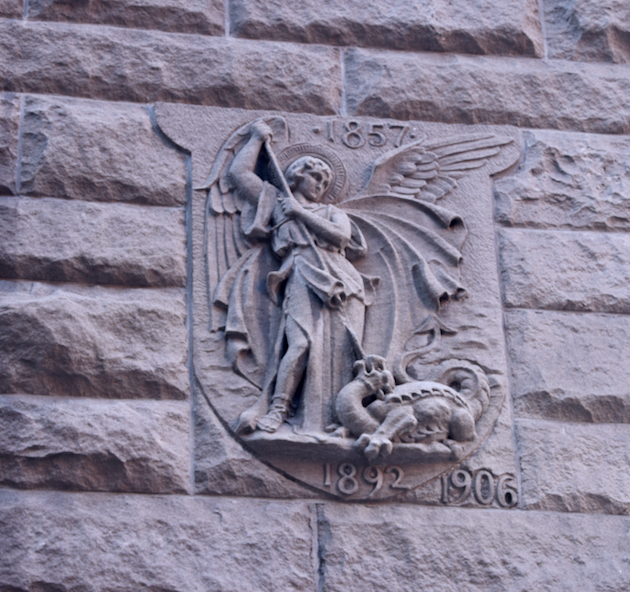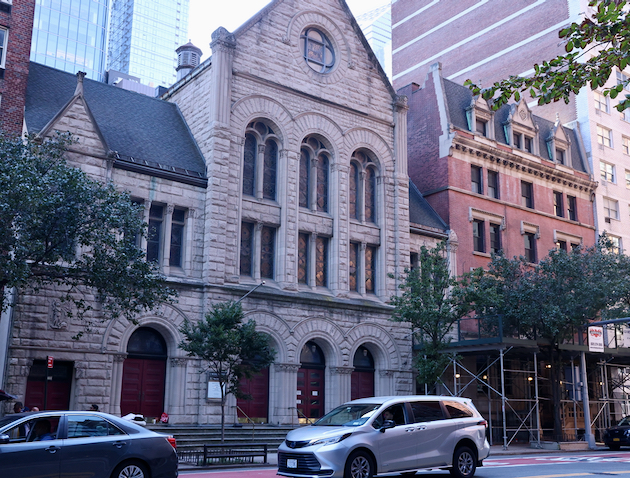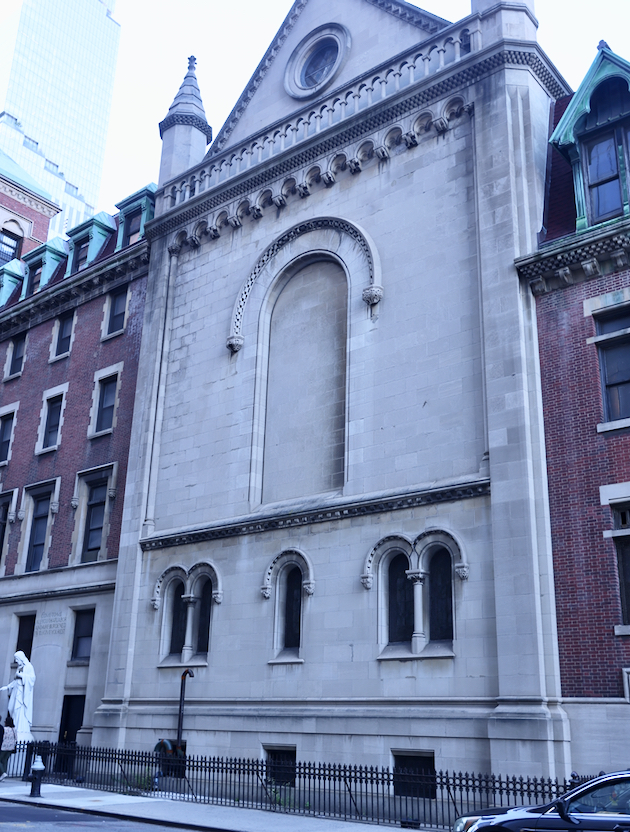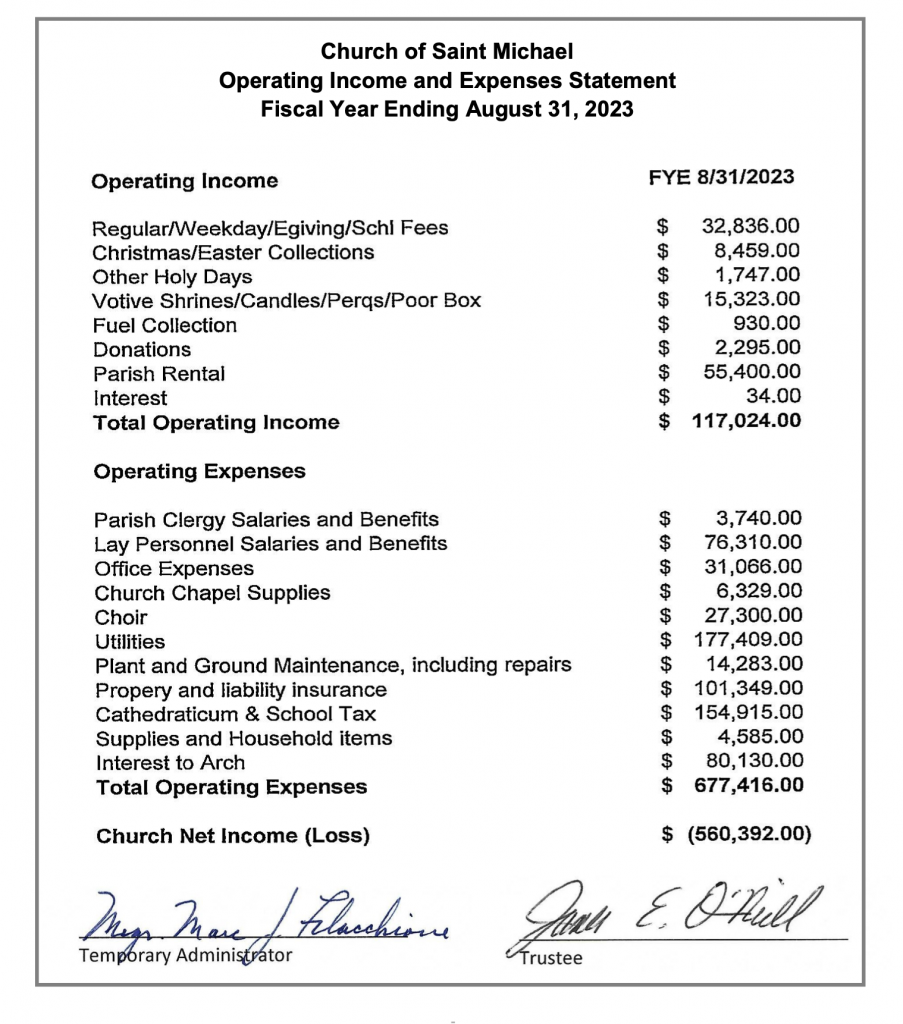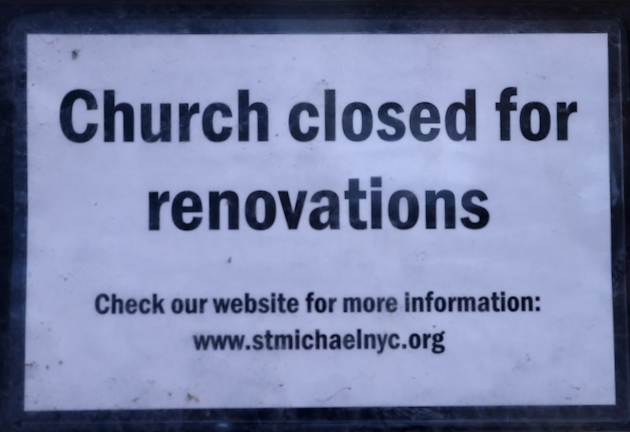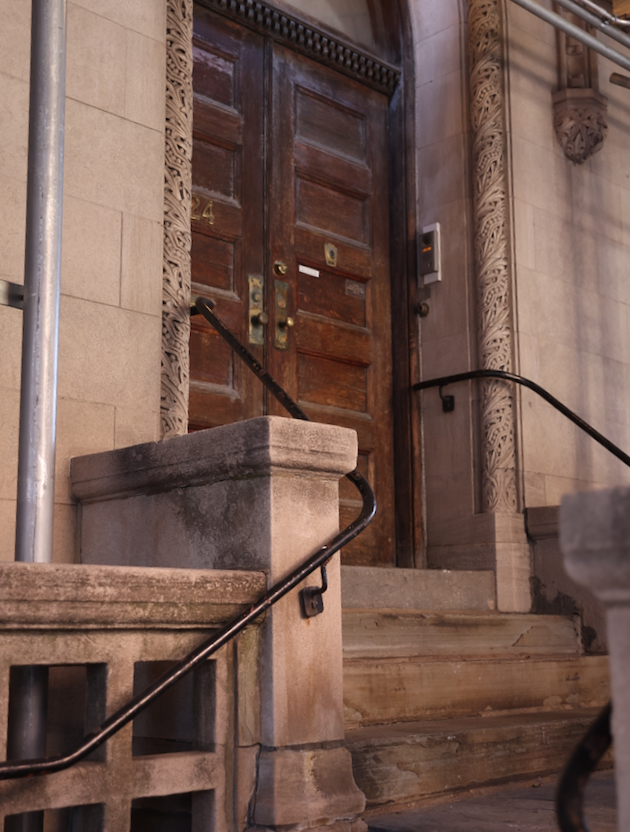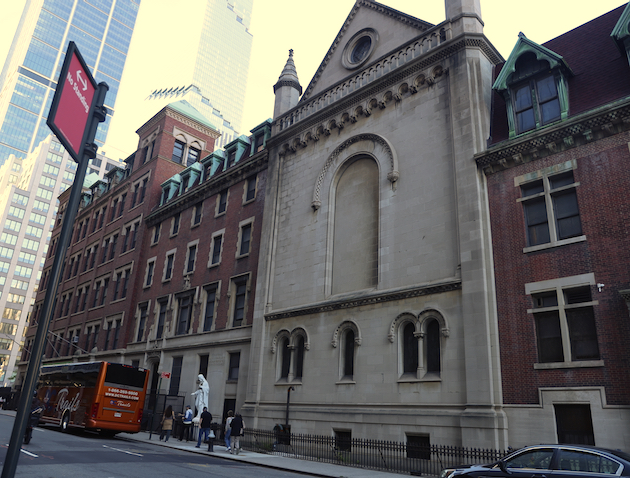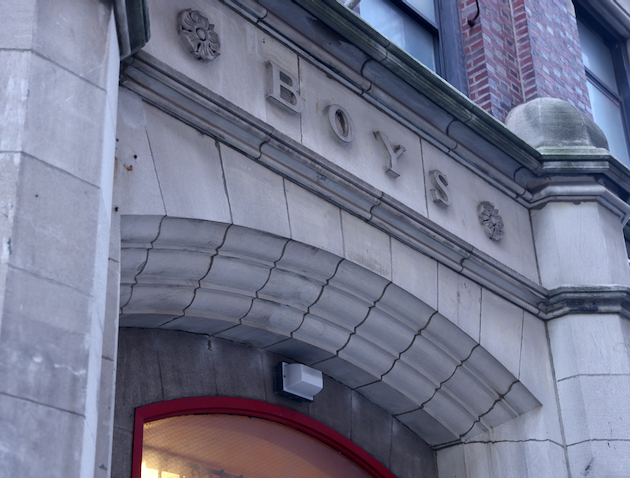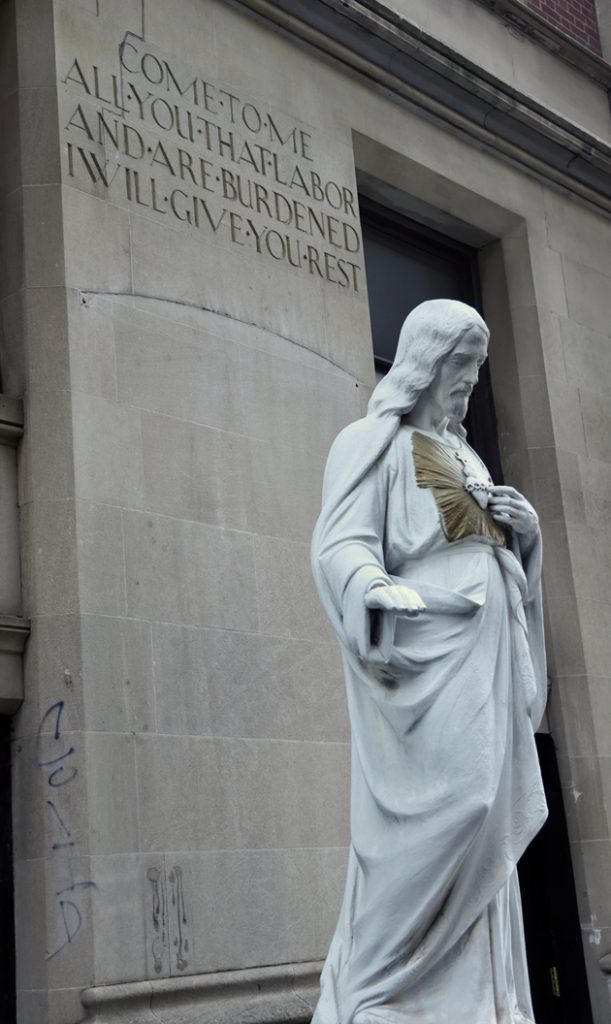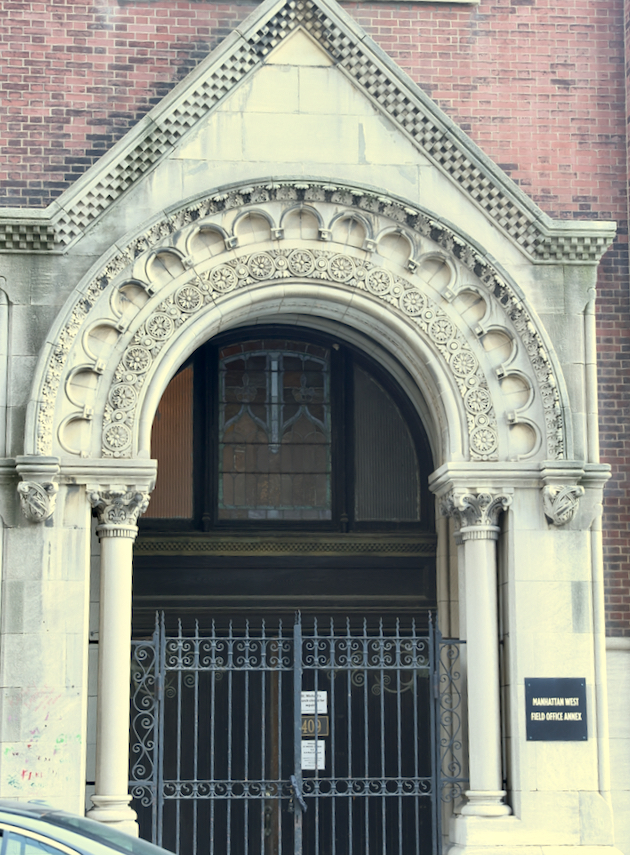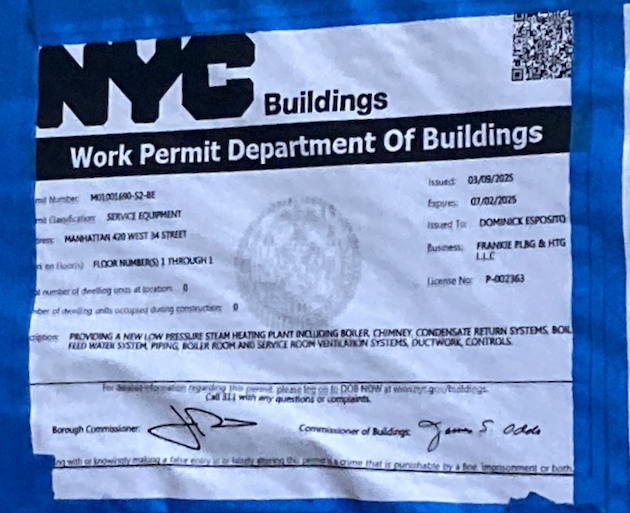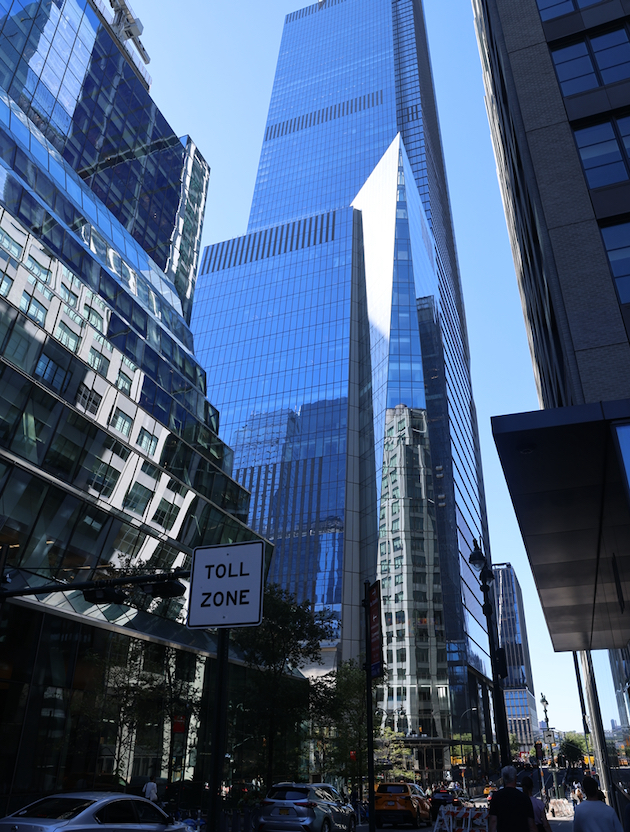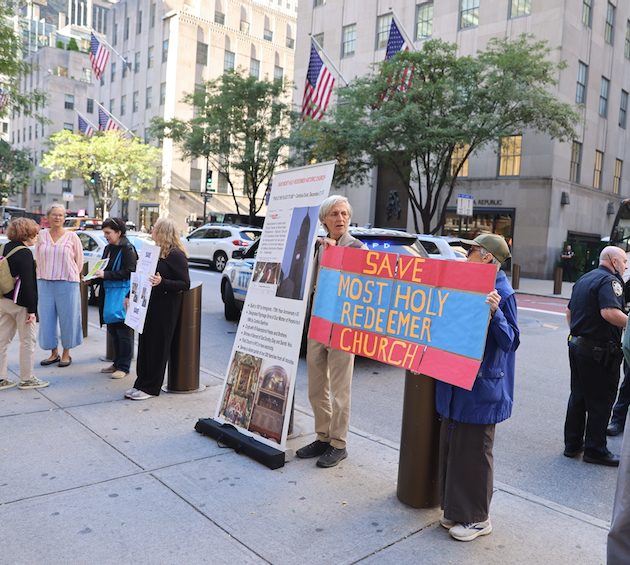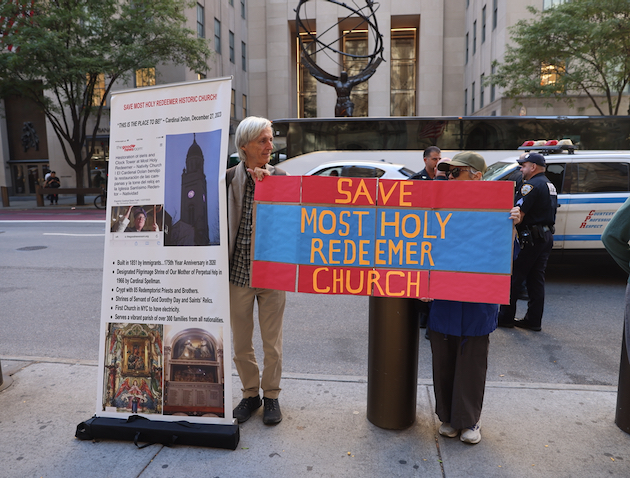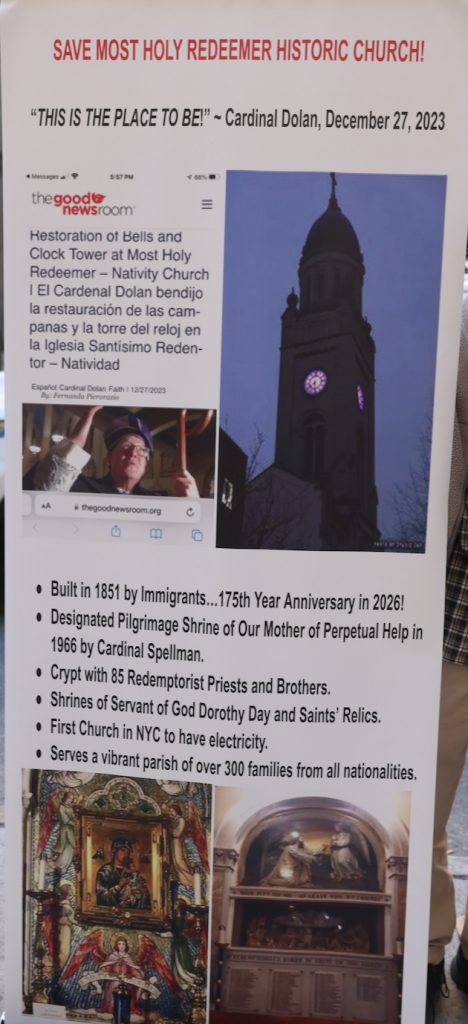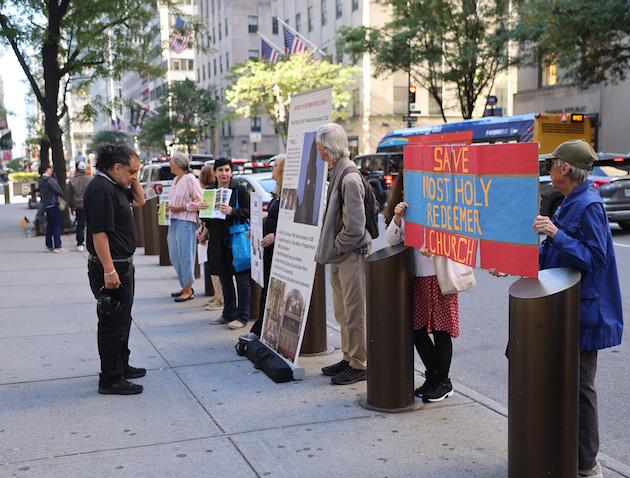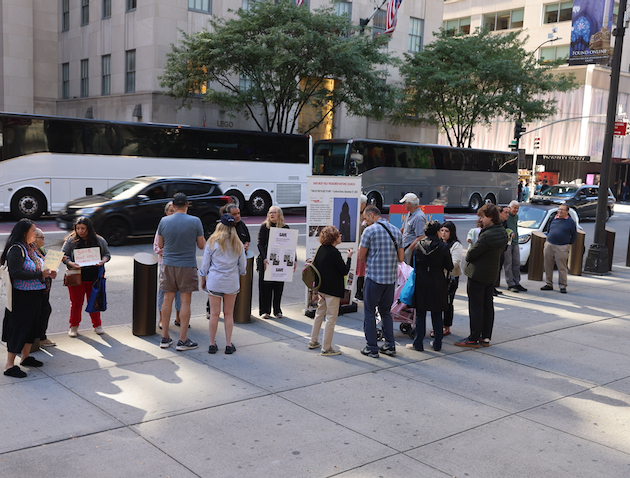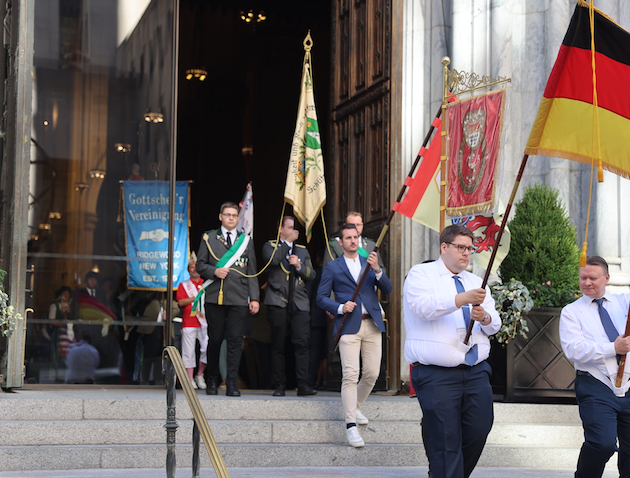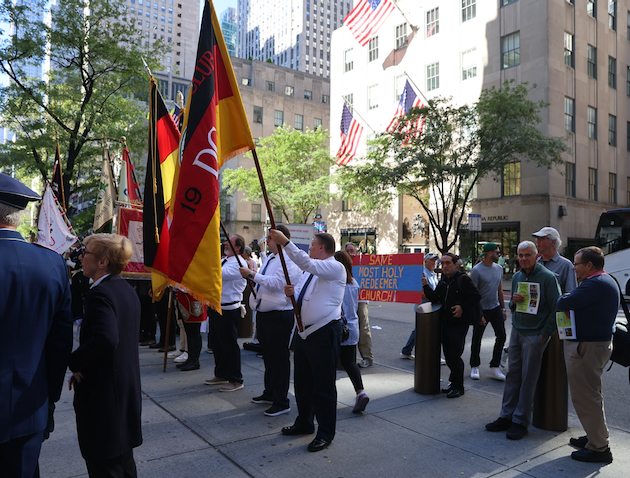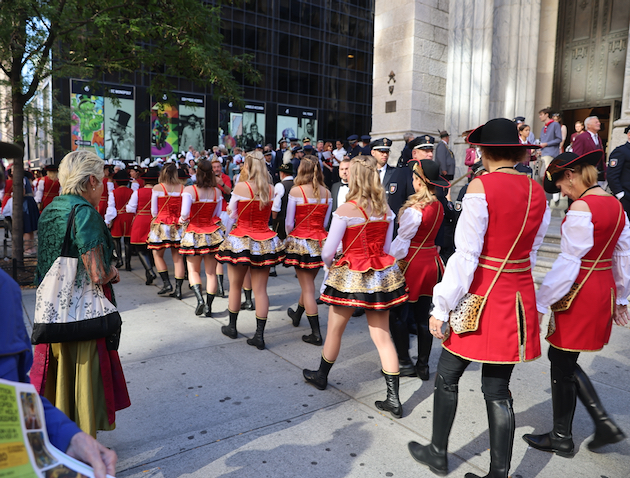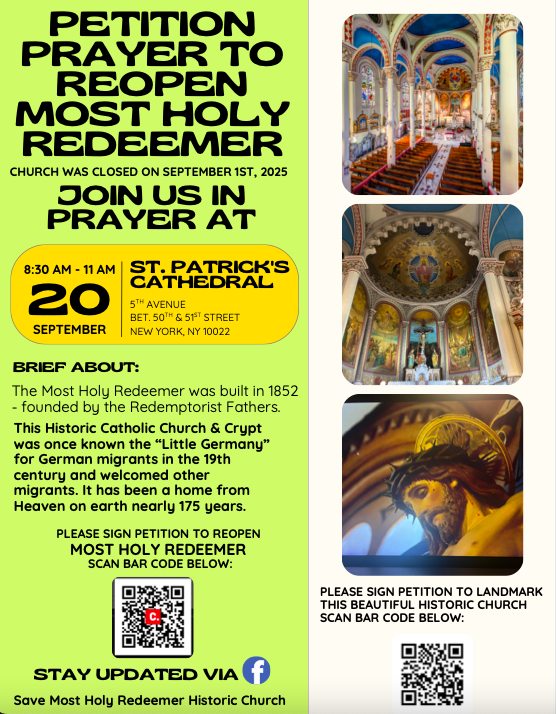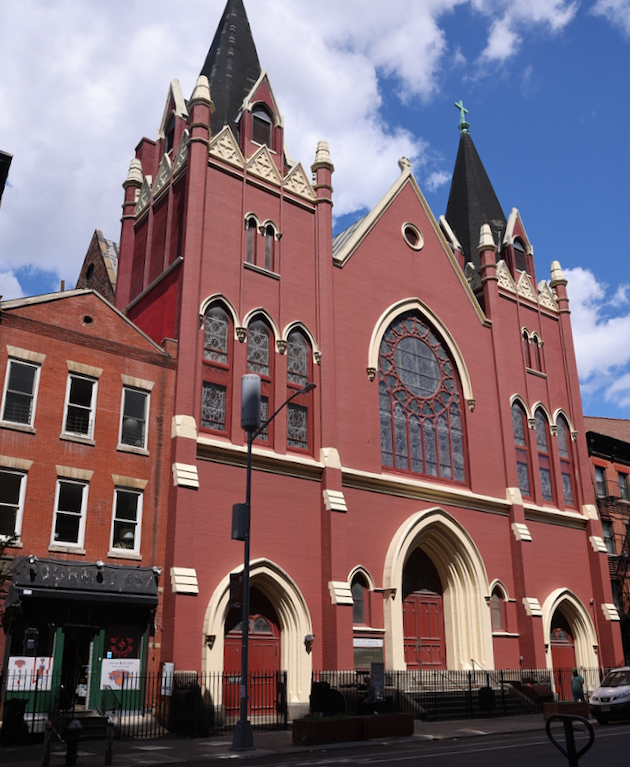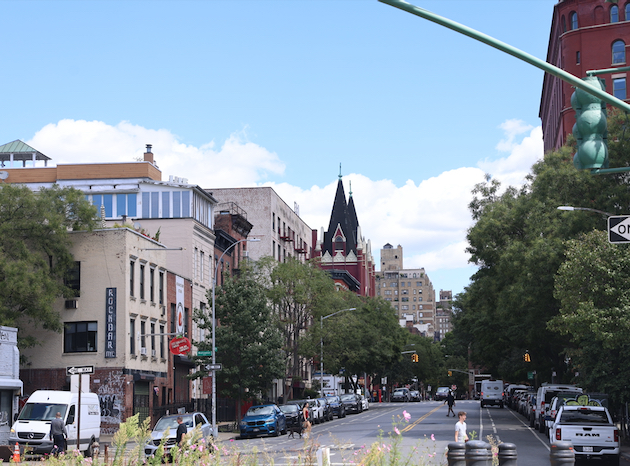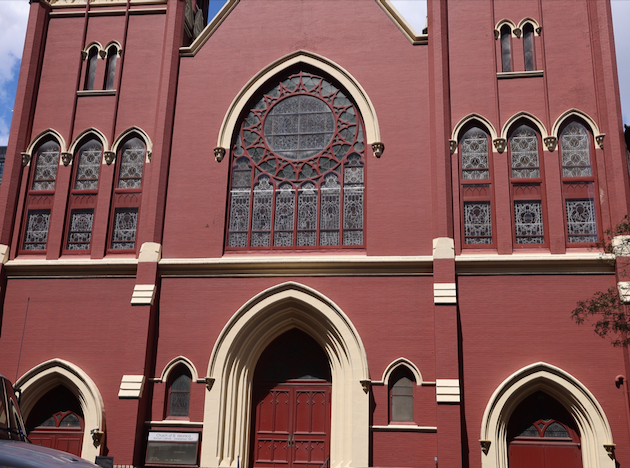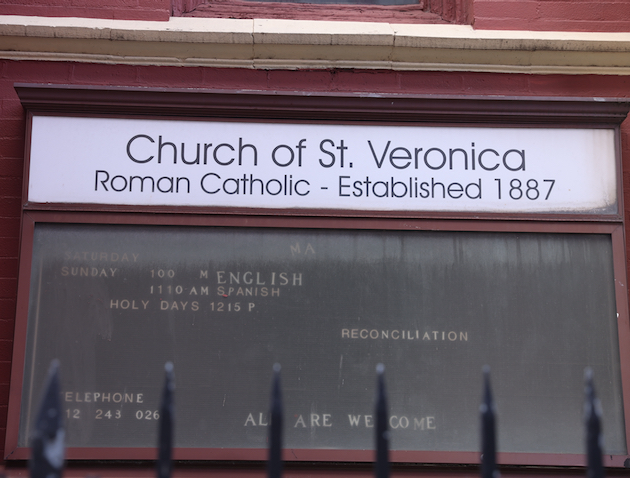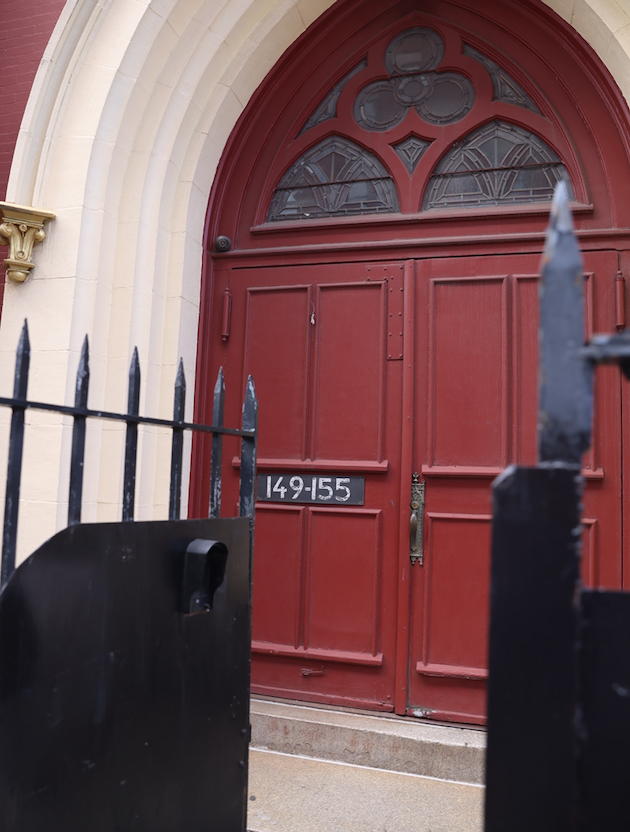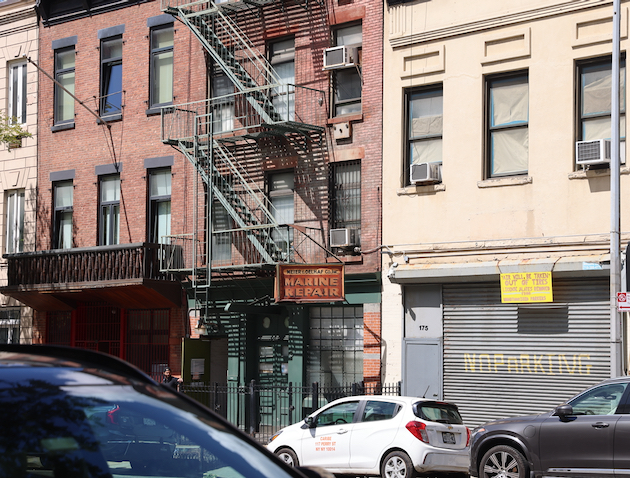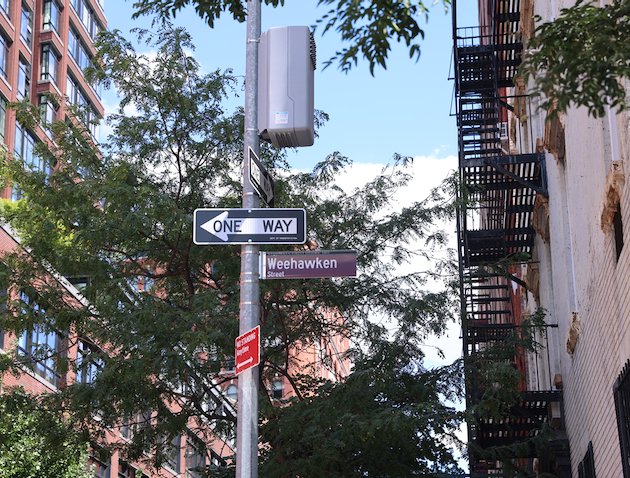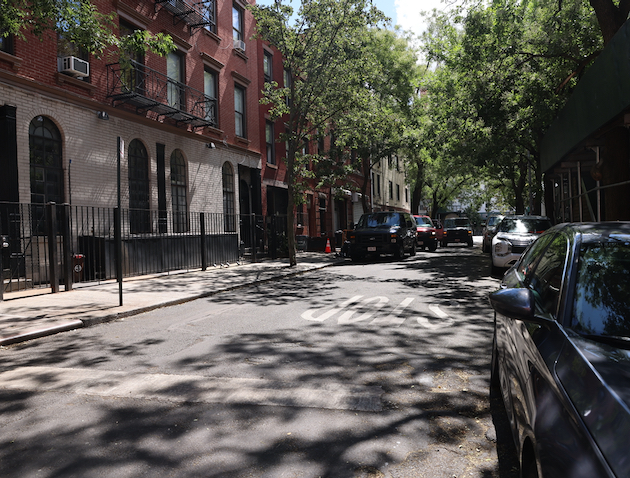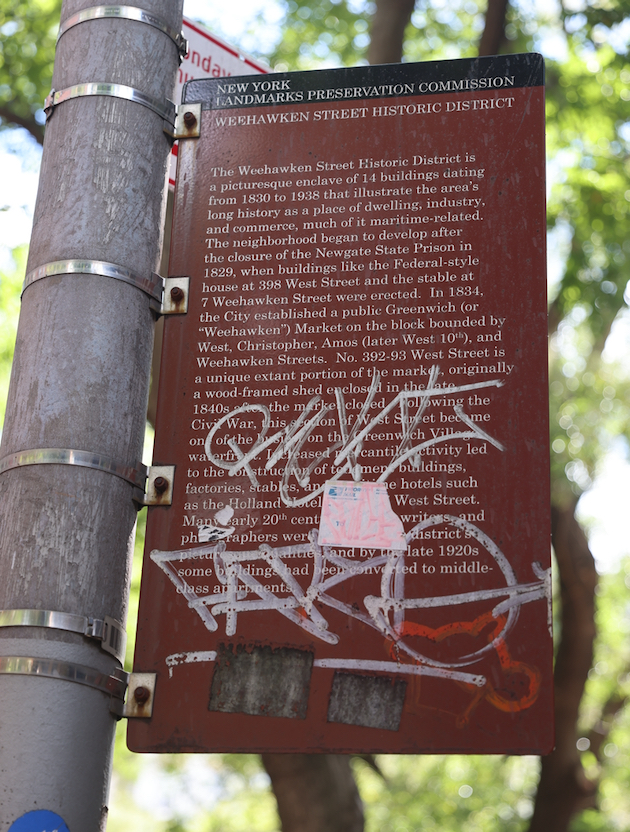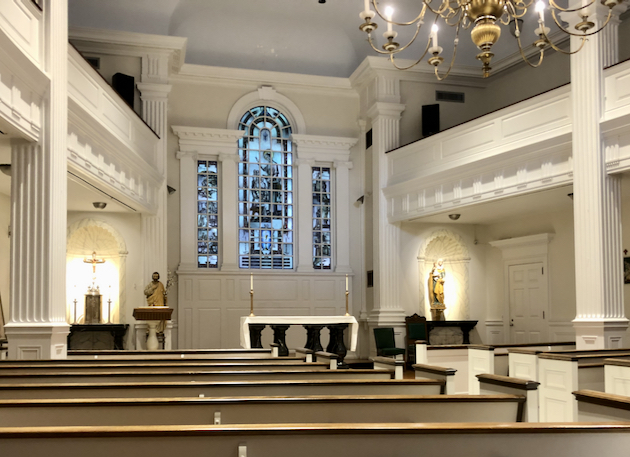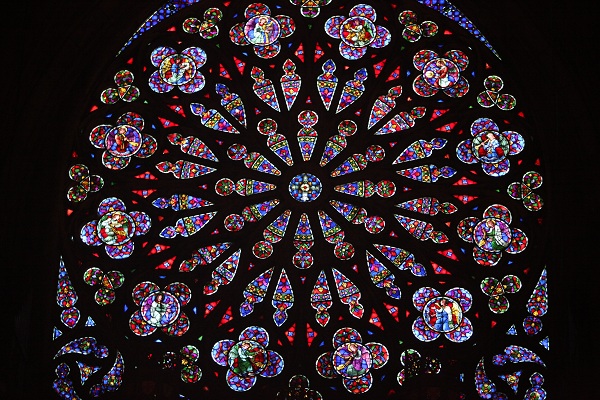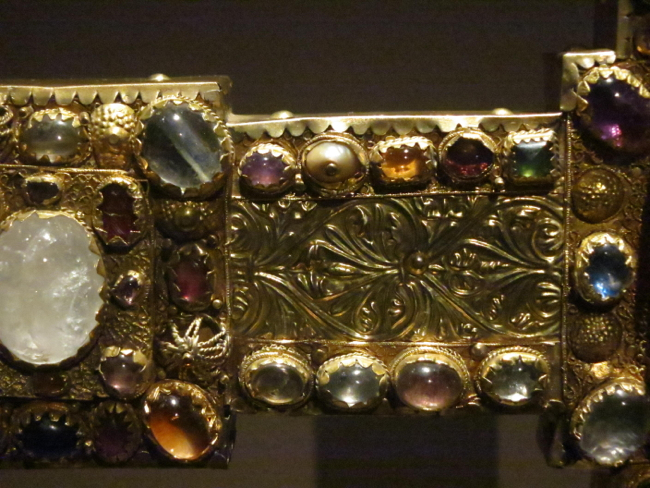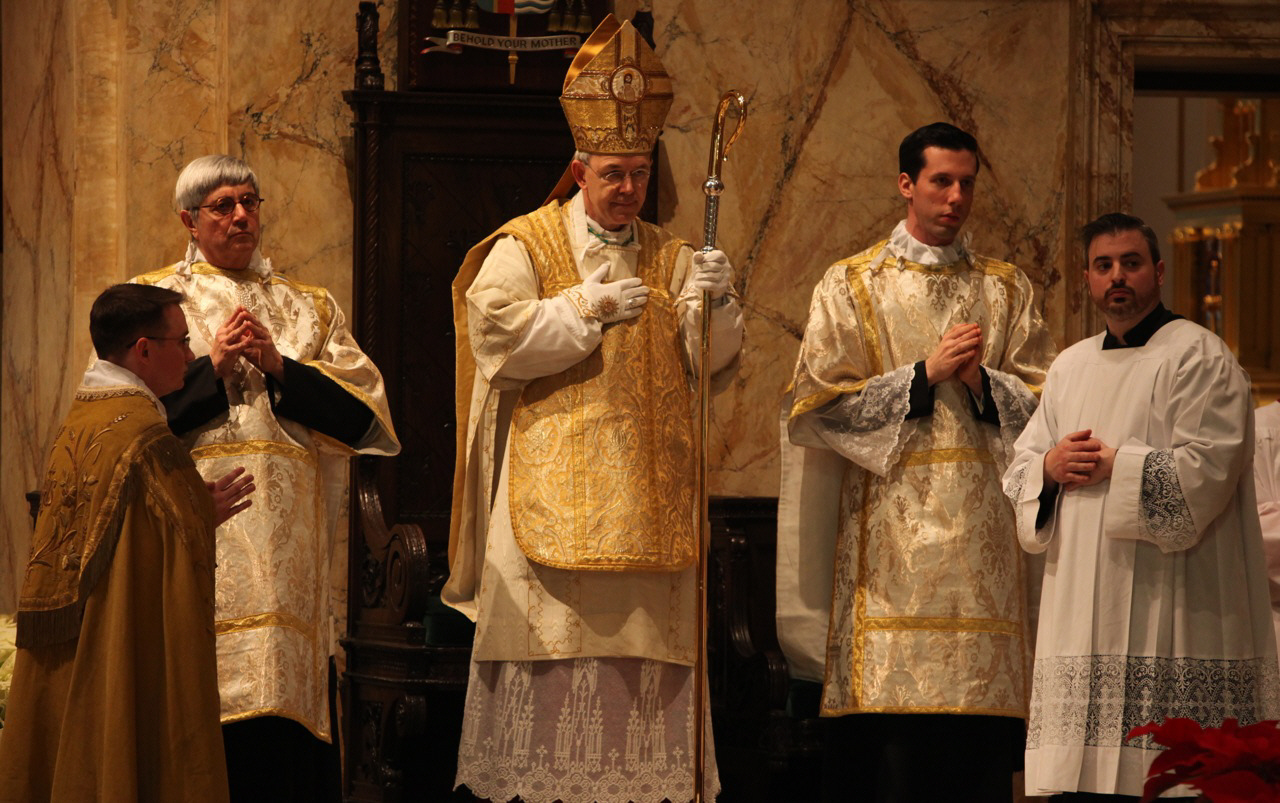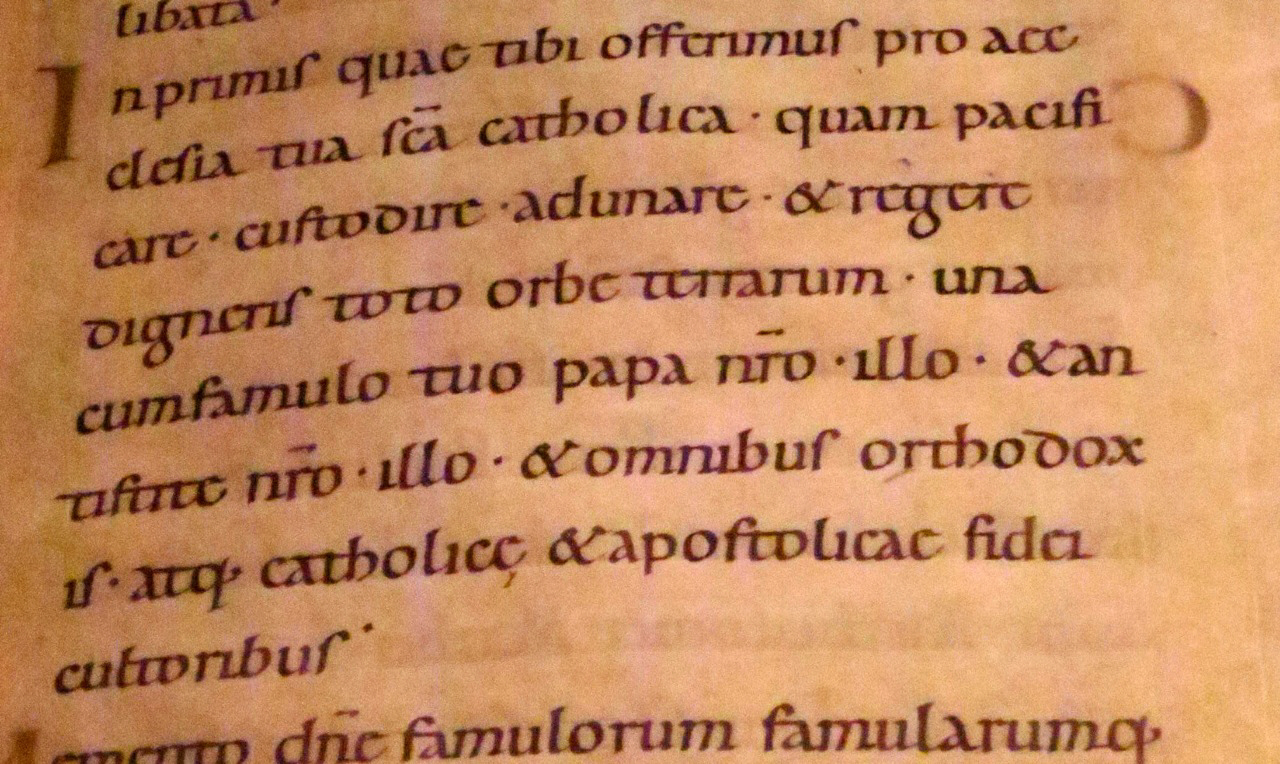We have all heard by now of the replacement of Cardinal Dolan. It is fitting, therefore, to take a look at two projects, launched at his initiative,and currently underway involving historic parishes of New York City
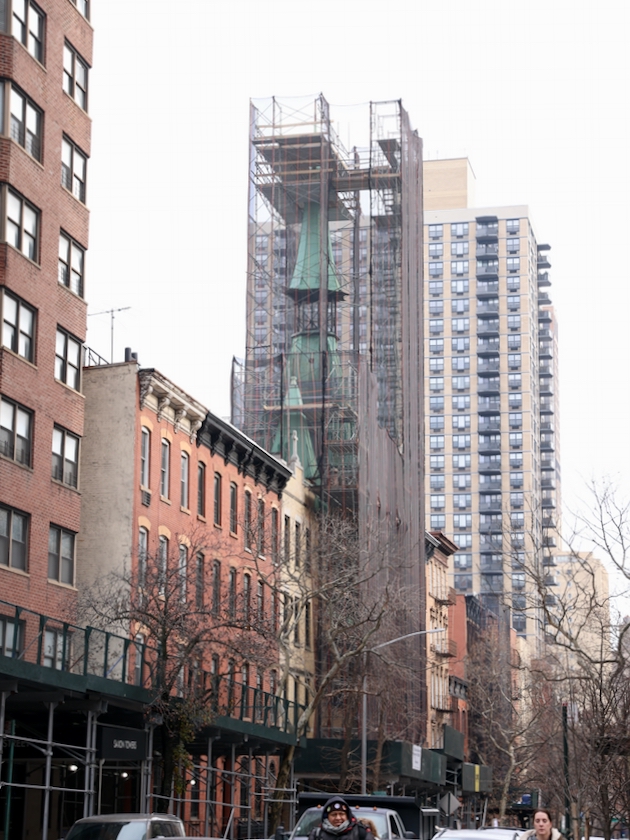
(Above) St Elizabeth of Hungary being demolished. (12/17/2025).
We have often covered on this site the parish of St. Elizabeth of Hungary, formerly one of the loveliest churches in Yorkville/the Upper East Side. Most recently, we published The End of the Churches: St. Elizabeth of Hungary (8/19/2024)(with links to earlier posts)
The parish was closed by Cardinal Dolan in 2014 and sold to a developer for $11.8M in 2024. It will be replaced by a building offering eight luxury condominiums, each with its own outdoor space. Now, demolition has begun. See Young, Michael and Pruznick, Matt, “Preliminary Rendering Revealed For 213 East 83rd Street On Manhattan’s Upper East Side,” New York Yimby (7/15/2025)
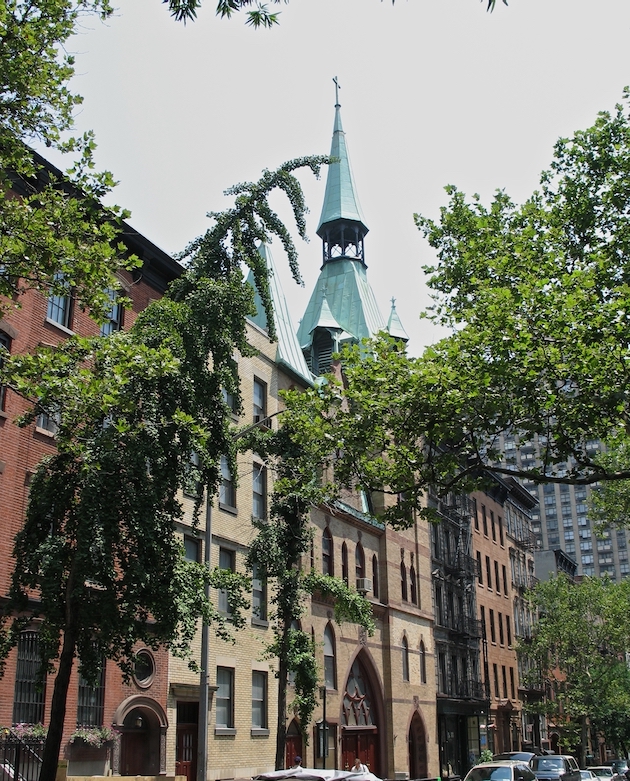
(Above and below) St. Elizabeth church and tower in happier days. (7/12/2005)
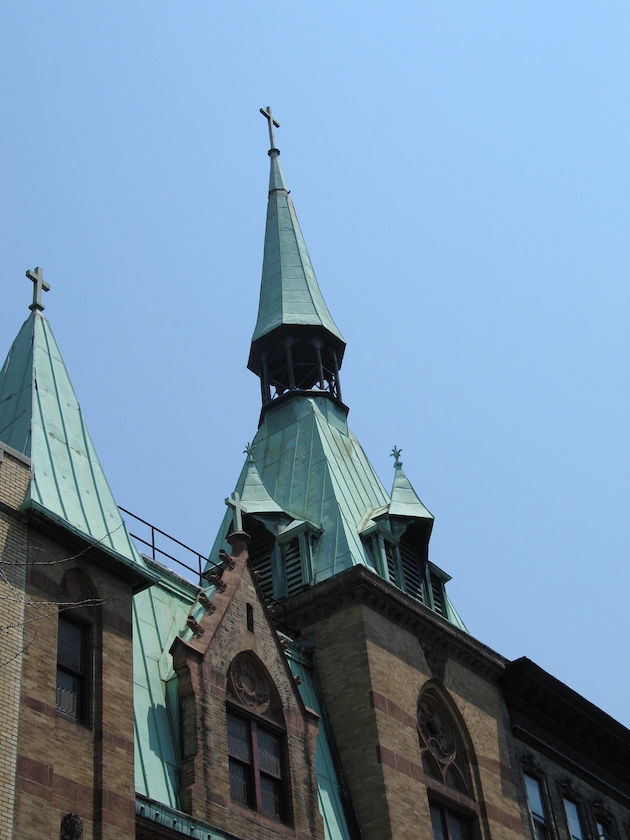
(Below) as it is today.


(Above) The main entrance today.
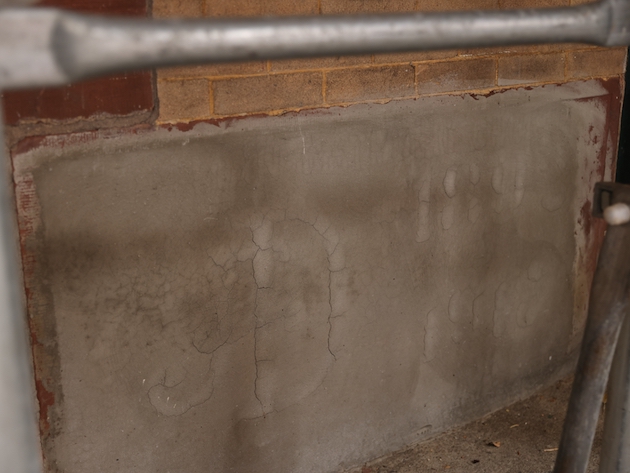
(Above) The cornerstone has been (ritually?) defaced. (Below) As it appeared in 2005.
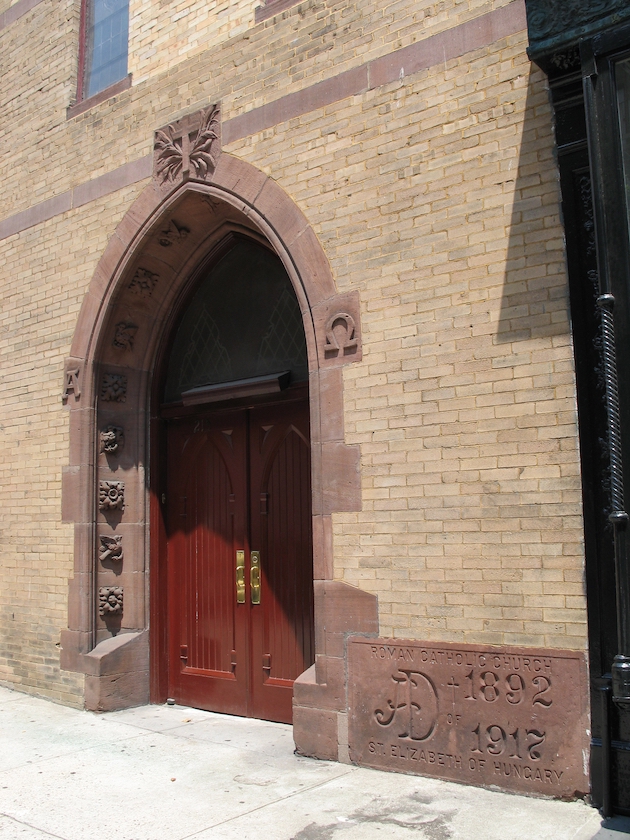
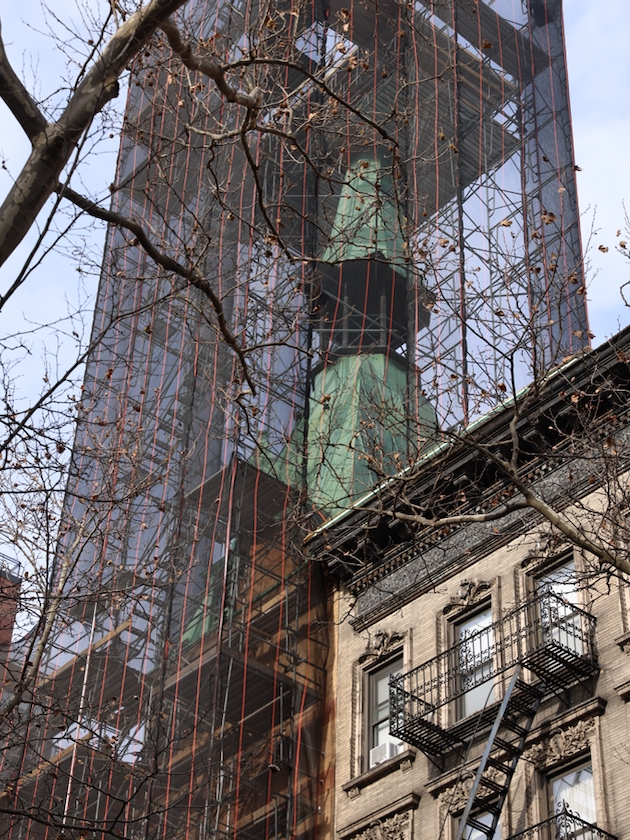
Almost inevitably, when I take such pictures – and again last Thursday – a bystander speaks up. Whether he or she is a former parishioner, a neighbor or simply a passerby I usually don’t learn. They always express their sorrow at the loss – and sometimes indignation at the cardinal and the archdiocese. The clergy, however, have long ago ceased to care about such people and their opinions. What counts now is the immediate realization of cash.
Moving south and west to far-off Chelsea, we see that demolition has begun on the complex of buildings of the parish of St. Columba on 343 West 25th Street. One of the oldest Catholic churches on Manhattan island, St. Columba’s name and architecture reflect its beginnings in the 1840’s, as the Irish flocked to New York fleeing the great potato famine. For whatever reason, the original parish church built at that time of poverty – resembling a shed – was retained, although later impressive windows and furnishings were added. In 1909 a splendid new school was built. By 2013, the parish was predominantly “Hispanic.” In those years I had friendly dealings with the 1-woman “IT department” of the parish (they had a avery nice website).
For our report on this parish in 2013, see: The Churches of New York XXXVIII: a Survivor in Chelsea (6/24/2013)
Under Cardinals Egan and Dolan things unwound with ever increasing speed. In 2006 the school was closed. On 11/2/2014 the parish was merged with Guardian Angel parish, with the latter parish being the main “worship site.” In 2015 the pastor of St. Columba’s since 2011 was removed for, the archdiocese stated, “violations of the Charter for the Protection of Children and Young People.” 1) On 7/12/2022 the pastor found that a canopy over the altar had collapsed ( also tearing down with it a recent work of “art” on the wall behind the sanctuary). Immediately thereafter the church was closed – permanently. 2) 0n 1/1/2023 the church was “relegated to secular purposes” (= offered for sale). In January, 2025 the properties of St. Columba parish – the church and rectory, a school building and convent – .were sold to a developer for $48M. It was subsequently announced that 197 residential rental units in two towers would be built on the site. Demolition has now begun.
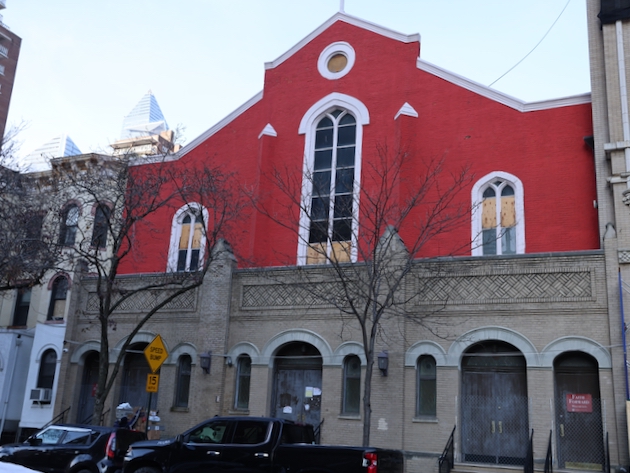
(Above) St. Columba Church (12/17/2025)
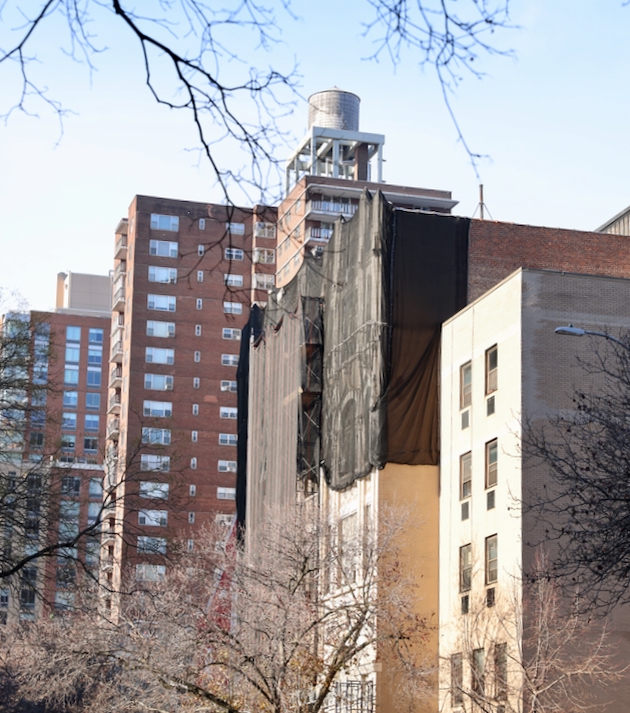
(Above and Below) The former school covered with netting and scaffolding.
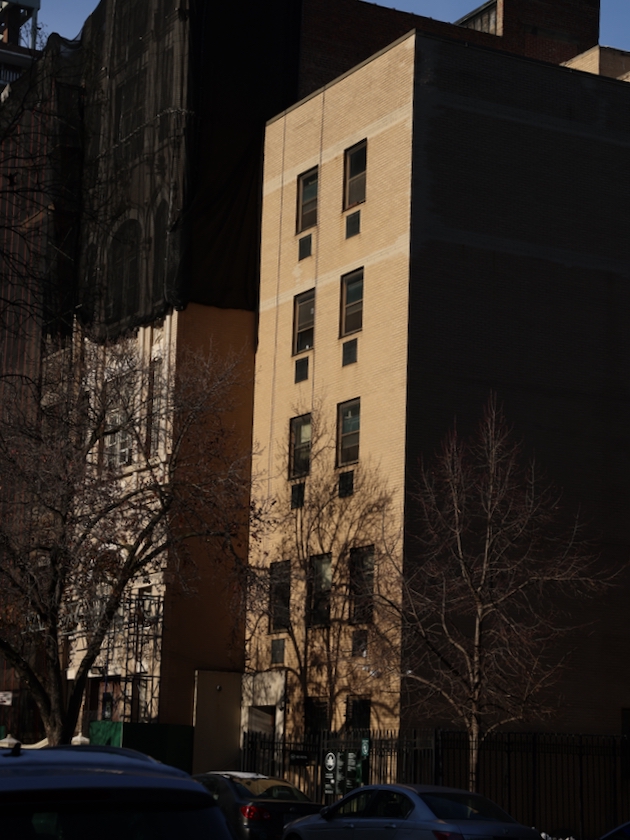
(Above and below) The former convent.
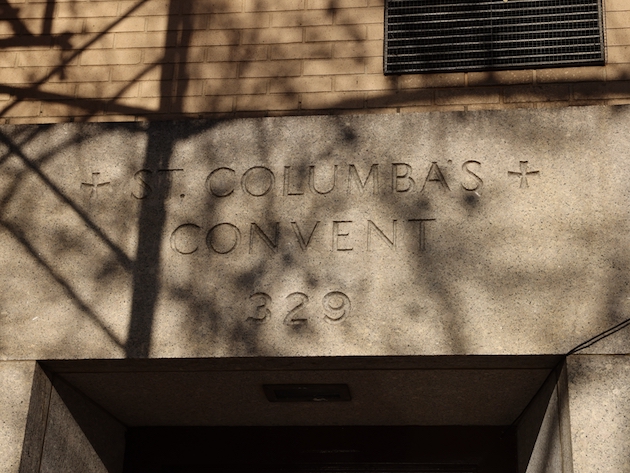
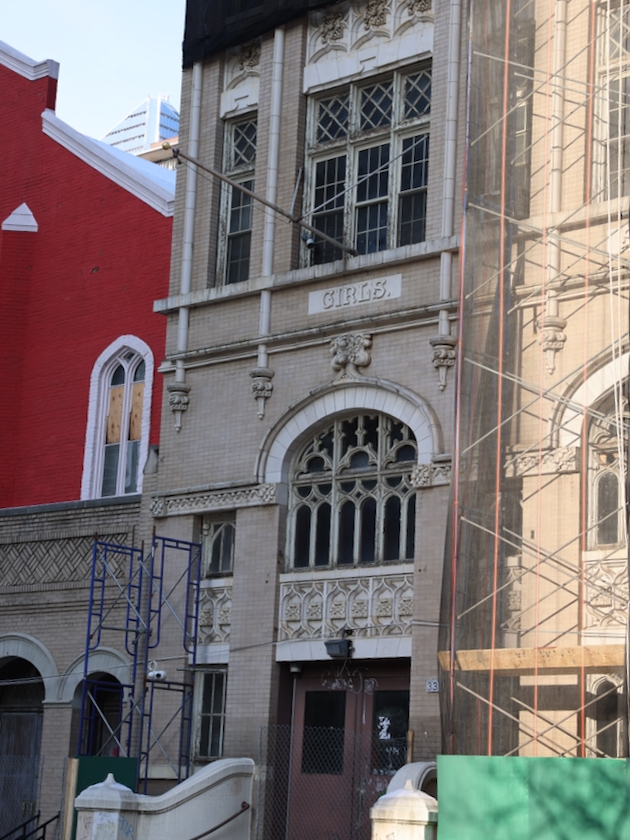
(Above) The former parochial school. It was rented out until quite recently to a non-Catholic school which has moved on to the premisses of another closed Catholic parochial school in Manhattan. (Based on my own experiences in Brooklyn, I doubt if in its last decades of operation St. Columba school actually used the separate boys’ and girls’ entrances as such.)
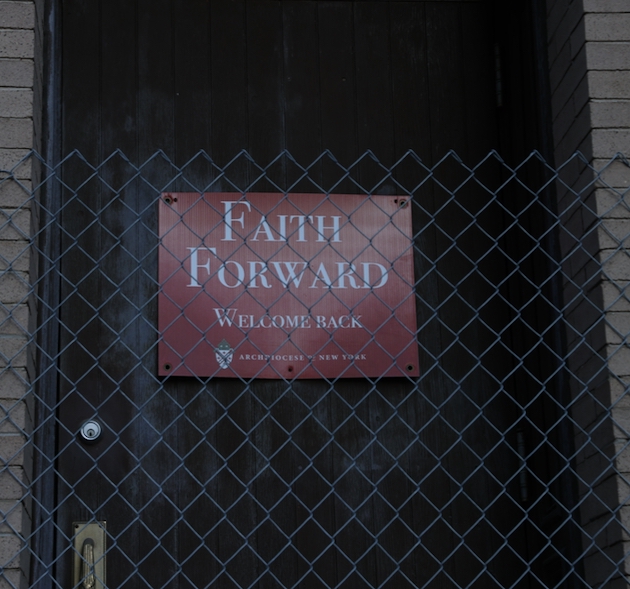
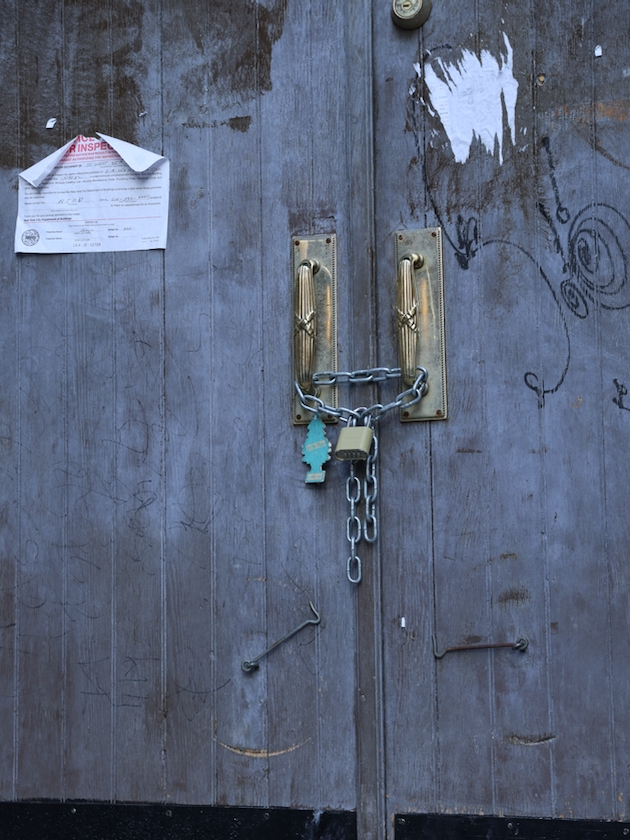
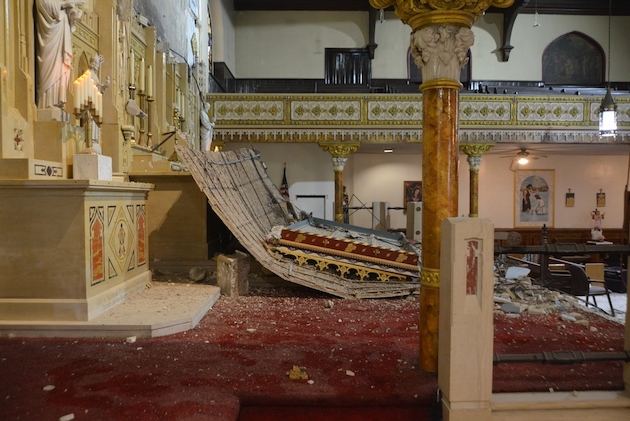
(Above and below) The collapsed canopy in 2022 ( From the website of Guardian Angel/St. Columba parish – see footnote 2)
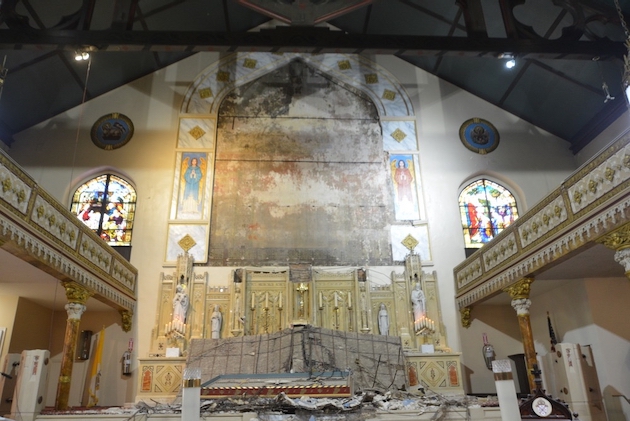
- Fr. Keith Hennesy, bishopaccountability.org (accessed 12/19/2025)
- “Photo Album, St. Columba’s Collapsed Canopy – July 12, 2022,” guardianangelstcolumba.org. This site still has many other pictures of the church (including its appearance in a 1976 Kojak episode). See also Rosenstock, Bonnie, “Uncertainty Builds, After St. Columba Church Canopy Collapse,” chelseacommunitynews.com, (9/19/2022) on the circumstances (and controversy)surrounding the canopy incident.
- “Timber Equities Preps 197-Unit Residential Project on Former St. Columba Church Site in Chelsea”, Traded.co (11/14/2025).
(All accessed 12/19/2025)
